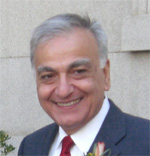District of Columbia Debt Collection Laws
 |
|
Thomas A. Mauro, Esq. |
Submitted Thomas A. Mauro, Esq., Mauro Law Offices, P.C.
Published by The National List of Attorneys
Thomas A. Mauro is the senior member of Mauro Law Offices, P.C. He established his Firm in 1979. He is a graduate of the Georgetown University Law Center and is admitted to practice in Maryland and the District of Columbia and all of the federal and state courts in both jurisdictions. He is also admitted to the United States Supreme Court. Mauro Law Offices is affiliated with Virginia counsel and thus covers the Virginia courts in the Washington, D.C., Metro area. The Firm has been engaged in creditors’ rights litigation since 1986 and also maintains a corporate consulting practice.
Overview of the District of Columbia Court Structure
To understand collections law and practice in Washington, D.C., it is necessary to remember that the District of Columbia was established as the seat of the national government by the U.S. Constitution from an original ten square mile tract along the Potomac River, taken from the State of Maryland and the Commonwealth of Virginia. The Virginia parcel located west of the Potomac (now Arlington and Alexandria, Virginia) was ceded back to Virginia before the Civil War. Accordingly, the District’s jurisprudence has been historically influenced by developments of the law in Maryland. The jurisdiction in one form or another has been governed by Congress. As such, the federal court in Washington, the United States District Court for the District of Columbia, served as the local court in most civil and criminal matters.
In 1972 Congress created a Charter that grants the City limited Home Rule. Congress created the elected Office of Mayor as an executive branch, an elected City Council as the Legislative Branch and a judicial branch consisting of the Superior Court of the District of Columbia and the Court of Appeals for the District of Columbia (as distinguished from the United States Court of Appeals for the District of Columbia Circuit). The Superior Court and the D. C. Court of Appeals function like state courts while the federal courts in D.C. have assumed the traditional limited jurisdiction of other federal courts. The judges of the Superior Court and D. C. Court of Appeals are appointed to 15 year terms by the President of the United States, and the local United States Attorney’s office carries out the function of state prosecutor. So if a creditor is harmed by some type of criminal conduct, the United States Attorney’s Office is generally the only place to go to seek criminal sanctions. The Superior Court is a single court divided into Civil, Criminal, Family, Probate and Tax Divisions, and a Small Claims and Conciliation Branch of the Civil Division. It has only one location. The Rules of Civil Procedure in the Superior Court are for the most part the same as the Federal Rules of Civil Procedure in number and content.
Download the complete white paper District of Columbia Debt Collection Laws.
